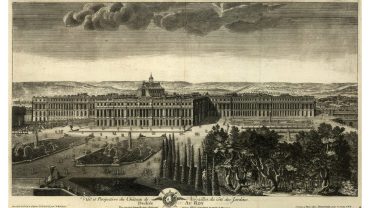Boris Caesar Wilhelm Hagelin, inventor, engineer and entrepreneur was born in modern-day Azerbaijan to Swedish parents in 1892. He graduated in 1914 from the Royal Institute of Technology in Stockholm with a degree in mechanical engineering.
He started working for a company called Aktiebolaget Cryptograph owned by eccentric cipher machine inventor Arvid Damm in which his father was an investor. Boris was placed in the company to represent the family’s investment and ended up taking the business over in 1925. At the start of World War II he left Sweden and relocated to Switzerland.
His C-Series machines outsold the famous Enigma machines designed by German Arthur Scherbuis and this made him a very rich man. In fact according to declassified NSA documents, the USA alone bought 140,000 of them.
The immediate post-war years slowed the business to a virtual halt as lasting peace was expected but as the Cold War developed, the need for secure communications returned.
The Hagelin machine was about to become front and centre in what has been described as ‘the most successful intelligence heist of the twentieth century’.
Quis Custodiet Ipsos Custodes?

Boris Hagelin (1892 - 1983) Photo: Tony Evans/Timelapse Library Ltd via Getty Images)
Or, who watches the watchmen? Between the 1930s and the early 1990s, hundreds of the world’s governments and military regimes trusted a single company, Crypto AG, to ensure their most secret communications stayed exactly that. Secret.
The company’s clients included Iran, Libya, Italy, Greece, Ireland, Egypt, Spain, Portugal, Argentina, Turkey, a number of Latin American military juntas, the nuclear rivals Pakistan and India and even Vatican City.
Interestingly, the two countries whose top secret information would have been most useful during the Cold War, China and the Soviet Union, were never Crypto AG customers.
What none of them knew was that in 1970, the company was secretly bought from Boris Hagelin – using the code name Minerva – by the Central Intelligence Agency (CIA) and the Bundesnachrichtendienst, the German intelligence agency known as the BND.
The Hagelin machines they were supplied with were rigged.
Operation Rubicon

Boris Hagelin with Rotor cipher machines (Photo: ullstein bild Dtl. via Getty Images)
First called Operation Thesaurus and later Operation Rubikon, sometimes spelled Rubicon, the Washington Post called it ‘the intelligence coup of the century’.
In effect, the world’s governments, some of them fraught with instability, were paying the West Germans and the Americans for the privilege of listening to their most secret and sensitive information. For over twenty years, the operations of Crypto AG – including hiring and firing, design, sales targets and how the technology was configured – were controlled by the Americans and West Germans. All they had to do was sit back and listen.
And listen they did.
They listened to Iran’s leaders talking about the 1979 hostage crisis that saw Iranian militants storm the US Embassy in Tehran taking Americans hostage for 444 days.
They listened as Argentina’s military leaders discussed their tactics and plans for the Falklands War in 1982, feeding the information back to the British.
They listened in 1978 to the Egyptians planning their negotiation tactics for the historic Camp David Peace Accords brokered by President Jimmy Carter.
They listed as Libyan officials congratulated themselves on the 1986 bombing of the La Belle nightclub in Berlin.
They listened to chatter from Panama in 1989 and found out that fugitive dictator Manuel Noriega was in the Vatican embassy in Panama City.
On occasion, the Hagelin machines would arouse suspicion so the company would either cover up any faults or sell them upgraded machines. However not everything went swimmingly. In 1992, Hans Bühler, an employee of Crypto AG selling Hagelin machines he had no idea had been tampered with was arrested in Iran and interrogated for nine months. He was subsequently released after the BND paid a ransom of $1 million.
While Operation Rubikon was hailed as a success, it wasn’t without its human toll. A year later the BND sold its stake in the company for a reported $17 million citing the political risks were becoming too great.
It is believed the CIA ended their interest in the business sometime in the late 2010s.
Boris Hagelin, encryption maestro, died in September 1983 at the age of 91. Just before he passed, the CIA, on the pretence they were historians tracing the life of one of the twentieth century’s most brilliant and creative engineers, shipped his entire collection of business records and personal papers back to the USA.












